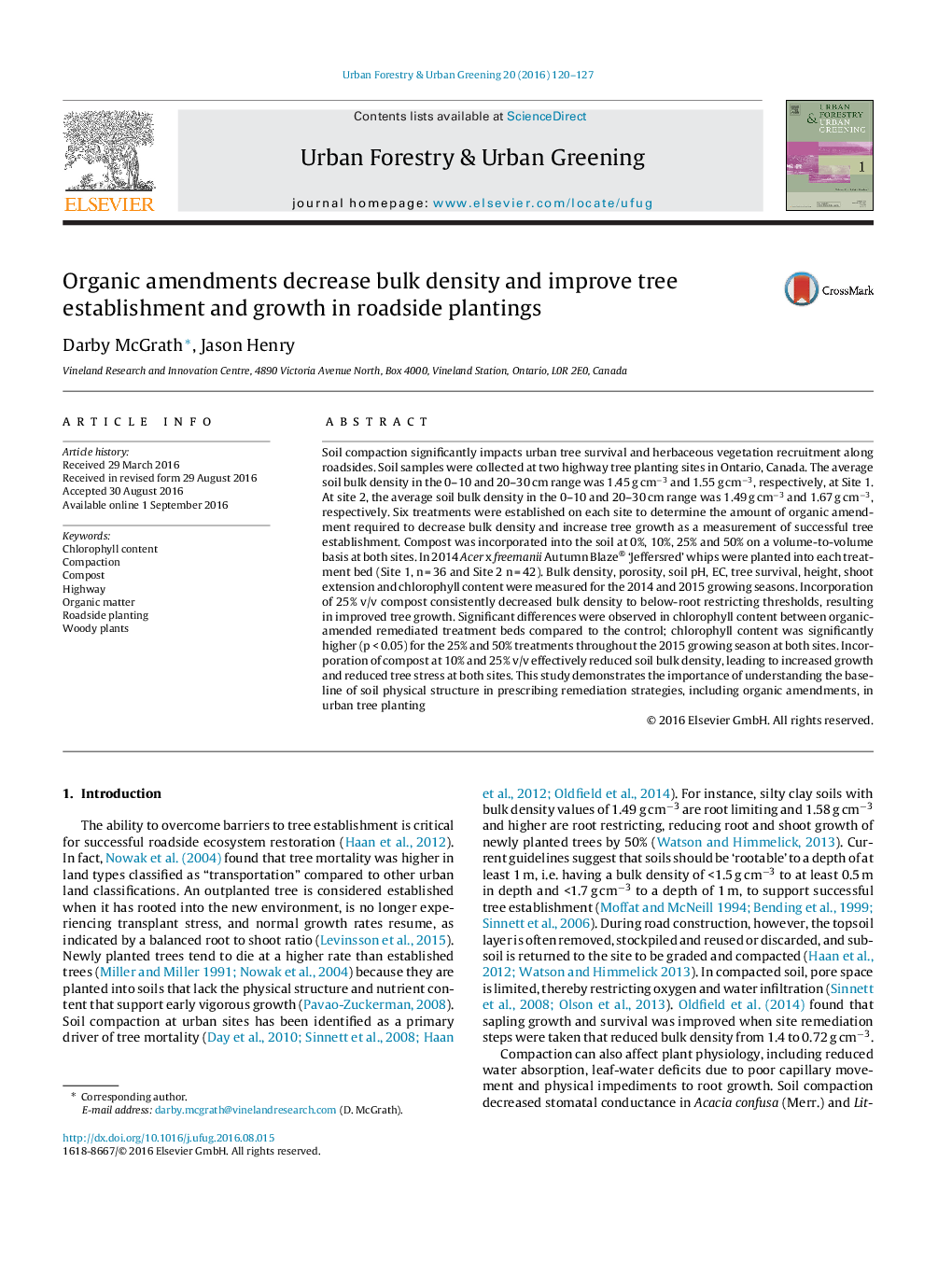| Article ID | Journal | Published Year | Pages | File Type |
|---|---|---|---|---|
| 6461895 | Urban Forestry & Urban Greening | 2016 | 8 Pages |
â¢Bulk density can be effectively reduced to below root restricting levels using 25% compost v/v for compacted clay soils.â¢Planting beds prepared with 10-25% compost v/v improved tree establishment in roadside soils compared to amended and non-amended tree pits.â¢Baseline soil physical analysis should be used to prescribe rates of incorporation of organic amendments to improve tree establishment.
Soil compaction significantly impacts urban tree survival and herbaceous vegetation recruitment along roadsides. Soil samples were collected at two highway tree planting sites in Ontario, Canada. The average soil bulk density in the 0-10 and 20-30 cm range was 1.45 g cmâ3 and 1.55 g cmâ3, respectively, at Site 1. At site 2, the average soil bulk density in the 0-10 and 20-30 cm range was 1.49 g cmâ3 and 1.67 g cmâ3, respectively. Six treatments were established on each site to determine the amount of organic amendment required to decrease bulk density and increase tree growth as a measurement of successful tree establishment. Compost was incorporated into the soil at 0%, 10%, 25% and 50% on a volume-to-volume basis at both sites. In 2014 Acer x freemanii Autumn Blaze® 'Jeffersred' whips were planted into each treatment bed (Site 1, n = 36 and Site 2 n = 42). Bulk density, porosity, soil pH, EC, tree survival, height, shoot extension and chlorophyll content were measured for the 2014 and 2015 growing seasons. Incorporation of 25% v/v compost consistently decreased bulk density to below-root restricting thresholds, resulting in improved tree growth. Significant differences were observed in chlorophyll content between organic-amended remediated treatment beds compared to the control; chlorophyll content was significantly higher (p < 0.05) for the 25% and 50% treatments throughout the 2015 growing season at both sites. Incorporation of compost at 10% and 25% v/v effectively reduced soil bulk density, leading to increased growth and reduced tree stress at both sites. This study demonstrates the importance of understanding the baseline of soil physical structure in prescribing remediation strategies, including organic amendments, in urban tree planting
